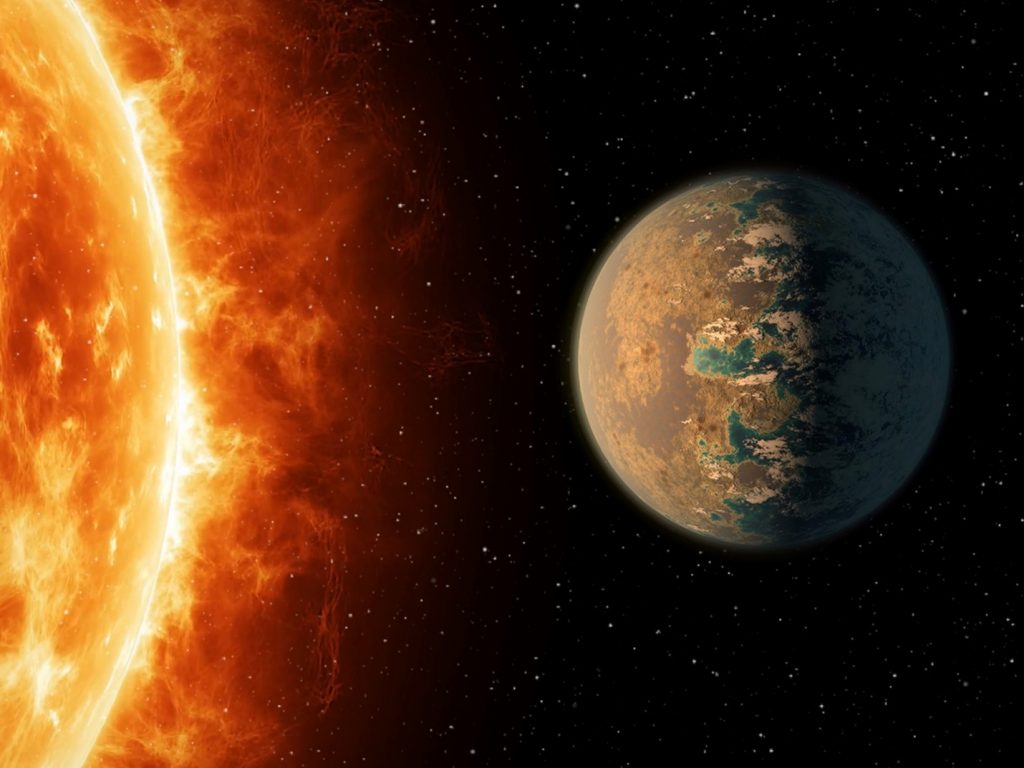For the first time, scientists have been able to directly prove that stone worlds outside the Solar System can be tidally locked, that is, they can always be turned to their star with one side. This was established thanks to the study of the super-Earth LHS 3844b.

Tidally locked planet
For the first time, an international group of astronomers and astrophysicists has been able to observe direct evidence that a planet outside the Solar System is tidally locked. In their study published in The Astrophysical Journal, they were able to prove this for the previously discovered world of LHS 3844b.
Tidally locked are those celestial bodies that are close enough to more massive objects and are exposed to their tidal forces. The latter have been slowing down their rotation around their own axis for millions of years until it is comparable in duration to the duration of the journey around the central body.
The end result of this process is clearly visible on the Earth’s moon. It is always turned towards us with the same side. The same is true for many moons of planets in the Solar System. But there have been no directly proven examples of this phenomenon outside of it so far.
More precisely, tidal locking should be a common phenomenon for other stars. Many exoplanets orbiting stars dimmer than the sun are so close to them that they would definitely have to be locked. However, this has not yet been proven for any Earth-like world outside the Solar System.
What scientists have learned about the super-Earth LHS 3844b
The planet LHS 3844b was discovered back in 2018. At the same time, scientists established that it was a super-Earth, i.e. a world similar in composition to Earth, but at the same time slightly larger than it. In addition, the orbit of this body hinted that it might be tidally locked. It was the last statement that the scientists decided to check.
For this, they used the Spitzer Space Telescope. It works in the infrared region of the spectrum, which means it can be used to analyze how much the surface or atmosphere of a celestial body is heated. That was exactly what they did with LHS 3844b.
Scientists have found that throughout the journey of the super-Earth around its luminary, one hemisphere remains noticeably colder than the other. This meant that it was not returning to the star, and therefore this world was indeed tidally locked.
The most important thing in the study is that now, in relation to many other exoplanets, it may turn out that they really always turn to their luminary with the same side. This can significantly affect estimates of the possibility of life in the universe.
According to phys.org
Follow us on Twitter to get the most interesting space news in time
https://twitter.com/ust_magazine


